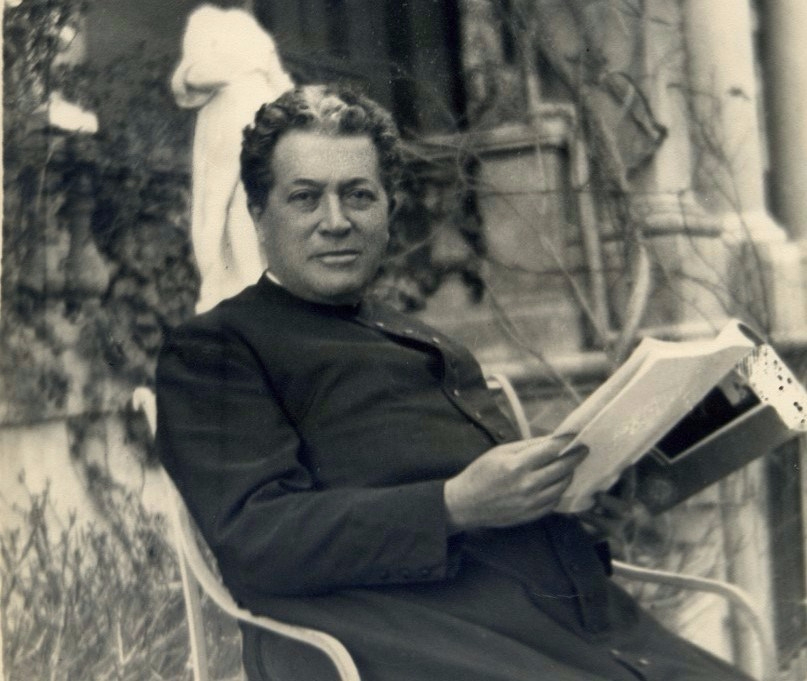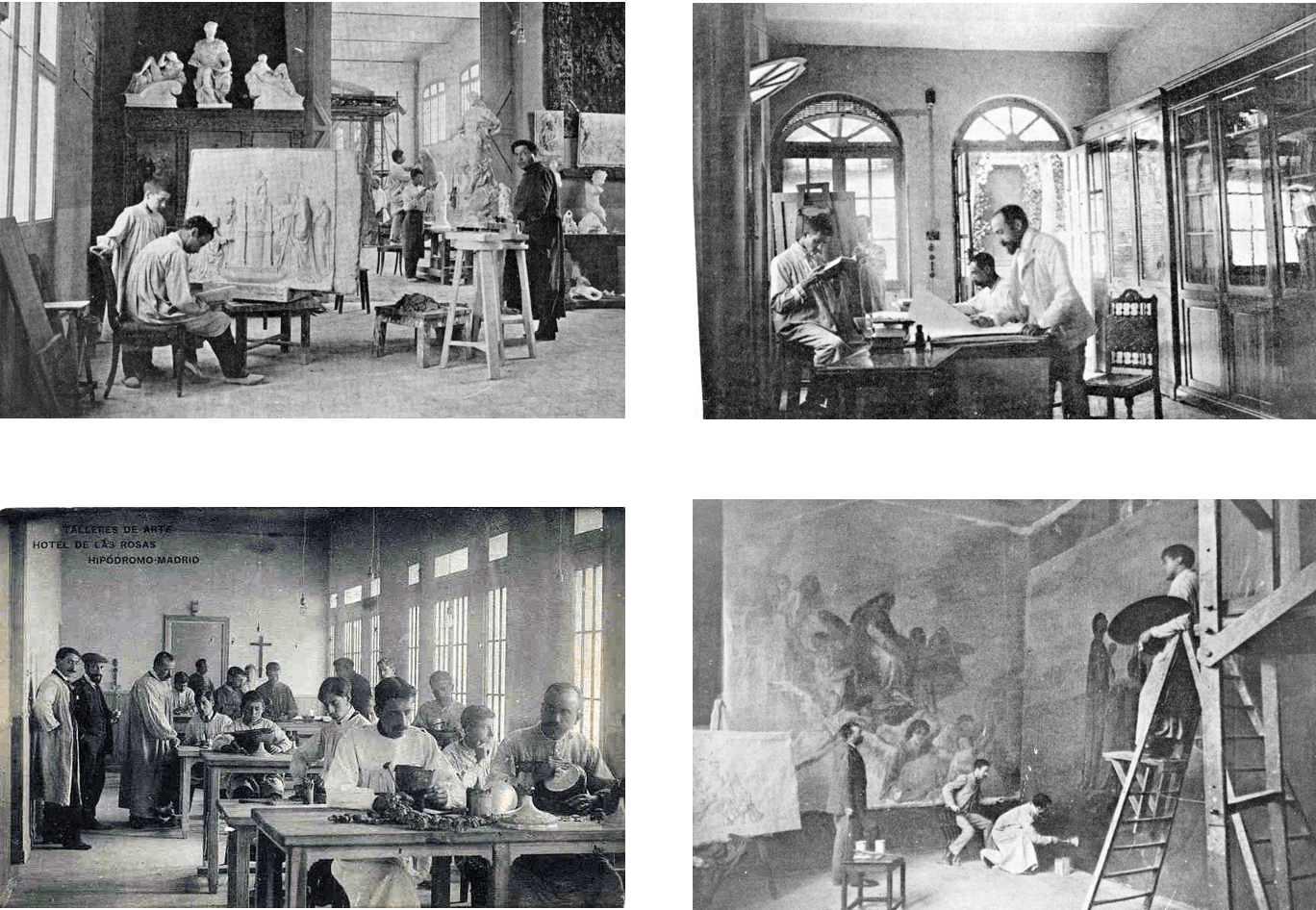Don Felix was born in 1868 in Pola de Lena (Asturias). Already in his childhood and youth, he revealed himself as a child with great artistic sensitivity and talent, skills that he continued to develop after his ordination to the priesthood in 1891.He completed his studies at the seminary of Oviedo. During this period he produced his first works of religious art and soon began to receive commissions from Monsignor Cos y Macho, bishop of the Madrid-Alcalá See.. and later in Madrid. In 1899 he obtained the Gold Medal of the Second Division of the Regional Exhibition of Fine Arts of Gijón and was incardinated as a priest in the Diocese of Madrid-Alcalá. where he continued his artistic training.
In 1904, he moved into the Hotel de las Rosas, located next to the old Madrid Hippodrome, with the intention of to bring together artists and craftsmen of all trades. Don Felix gave the following the first steps in a task to which he would dedicate a large part of his life: the renewal of Christian art.The industrial arts have been in decline since the end of the 19th century due to the entry of the industrial arts.

Don Félix Granda, ca. 1930
This renewal of sacred art is in tune with the Liturgical Renewal Movement that emerged with the aim of that sacred art recovered the splendor that had characterized the Church for centuries. The Liturgical Renewal Movement was a current of thought within the Church, which began around the middle of the 19th century and lasted, more or less, until World War II.
ONE VISION, ONE PURPOSE: THE RENEWAL OF SACRED ART.
This renovation was based on three pillars. artistic qualitysecond, the handcrafted qualityThe most important of all is the "La Salle", based on the nobility of the materials and the mastery of the technique. iconographic qualityHe placed great emphasis on the fact that his works should convey a theological message that would reach the heart of man. He developed, in fact, a complete iconographic program, collected in his book "Art Workshops"" (1911) a writing that reflects the spirit that underlies his art and from which The number of commissions for works not only from all over Spain, but also from abroad, multiplied.

The art workshops located in the Hotel Las Rosas

Sketch of a silver crown designed in the workshops.
This is how Don Felix expresses his intentions:
My purpose
To make an art impregnated with the odor of Christ, saturated with memories of the past, where the biblical spirit palpitates; and that this art be alive, because it is united to the trunk of traditions, and because, being of the past, it corresponds to the needs of the present: such is my desire.[...]
To show Jesus so that he may be known by all and that everywhere our eyes may see his image, our ears may hear his name [...].
That the priest, in showing his church, his sacred vessels, his objects of art, may these give him a motive to speak of Christ; that everything in the temple may teach Christ: this is the end that Christian art must pursue. [...]
To use art as we use language, to speak and teach Christ [...].
Introduction to "First catalog of the Workshops: declaration of intentions". 1911
DIRECTOR OF THE ART WORKSHOPS
As time went by, Don Félix put his artistic creation aside to take over as director of the workshops, a task he performed with great dedication. his great professionalism and skill given his great vision, his deep inner life and his extensive knowledge of art and theology. Soon the works of the workshops founded by Don Felix began to be present in churches on five continents.
The works produced at Talleres de Arte Granda still follow the two ways that Don Félix contemplated to reach people's hearts: the beautya complex language that is understandable to everyone, and iconographyreadable only by those with knowledge of the Christian artistic tradition. Both levels are a call to go deeper in order to be understood.
Left: Mr. Felix and his team next to the Sacred Heart of the Reina de la Habana Church (Cuba). Right: D. Felix next to the monument to Pius X commissioned for the church of Riese (Italy).
RECONSTRUCTION AFTER THE CIVIL WAR
After the Spanish Civil War, the workshops, with Don Felix at the head, actively participated in the reconstruction and restitution of religious art that had been massively destroyed during the war. The situation, aggravated by the lack of raw materials and the post-war social situation, forced the creation of works of lesser artistic importance during the years following the war.
Don Félix Granda passed away in Madrid on February 23, 1954, leaving as a legacy his vision and his work, which still continues to inspire our artists today.
